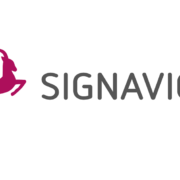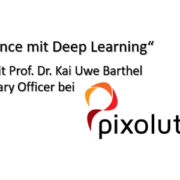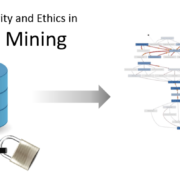Looking for the ‘aha moment’: An expert’s insights on process mining
Henny Selig is a specialist in process mining, with significant expertise in the implementation of process mining solutions and supporting customers with process analysis. As a Solution Owner at Signavio, Henny is also well versed in bringing Signavio Process Intelligence online for businesses of all shapes and sizes. In this interview, Henny shares her thoughts about the challenges and opportunities of process mining.
Read this interview in German:
Im Interview mit Henny Selig zu Process Mining: “Für den Kunden sind solche Aha-Momente toll“
Henny, could you give a simple explanation of the concept of process mining?
Basically, process mining is a combination of data analysis and business process management. IT systems support almost every business process, meaning they leave behind digital traces. We extrapolate all the data from the IT systems connected to a particular process, then visualize and evaluate it with the help of data science technology.
In short, process mining builds a bridge between employees, process experts and management, allowing for a data-driven and fact-based approach to business process optimization. This helps avoid thinking in siloes, as well as enabling transparent design of handovers and process steps that cross departmental boundaries within an organization.
When a business starts to analyze their process data, what are the sorts of questions they ask? Do they have at least have some expectation about what process mining can offer?
That’s a really good question! There isn’t really a single good answer to it, as it is different for different companies. For example, there was one procurement manager, and we were presenting the complete data set to him, and it turned out there was an approval at one point, but it should have been at another. He was really surprised, but we weren’t, because we sat outside the process itself and were able to take a broader view.
We also had different questions that the company hadn’t considered, things like what was the process flow if an order amount is below 1000 euros, and how often that occurs—just questions that seem clear to an outsider but often do not occur to process owners.
So do people typically just have an idea that something is wrong, or do they generally understand there is a specific problem in one area, and they want to dive deeper?
There are those people who know that a process is running well, but they know a particular problem pops up repeatedly. Usually, even if people say they don’t have a particular focus or question, most of them actually do because they know their area. They already have some assumptions and ideas, but it is sometimes so deep in their mind they can’t actually articulate it.
Often, if you ask people directly how they do things, it can put pressure on them, even if that’s not the intention. If this happens, people may hide things without meaning to, because they already have a feeling that the process or workflow they are describing is not perfect, and they want to avoid blame.
The approvals example I mentioned above is my favorite because it is so simple. We had a team who all said, over and over, “We don’t approve this type of request.” However, the data said they did–the team didn’t even know.
We then talked to the manager, who was interested in totally different ideas, like all these risks, approvals, are they happening, how many times this, how many times that — the process flow in general. Just by having this conversation, we were able to remove the mismatch between management and the team, and that is before we even optimized the actual process itself.
So are there other common issues or mismatches that people should be aware of when beginning their process mining initiative?
The one I often return to is that not every variation that is out of line with the target model is necessarily negative. Very few processes, apart from those that run entirely automatically, actually conform 100% to the intended process model—even when the environment is ideal. For this reason, there will always be exceptions requiring a different approach. This is the challenge in projects: finding out which variations are desirable, and where to make necessary exceptions.
So would you say that data-based process analysis is a team effort?
Absolutely! In every phase of a process mining project, all sorts of project members are included. IT makes the data available and helps with the interpretation of the data. Analysts then carry out the analysis and discuss the anomalies they find with IT, the process owners, and experts from the respective departments. Sometimes there are good reasons to explain why a process is behaving differently than expected.
In this discussion, it is incredibly helpful to document the thought process of the team with technical means, such as Signavio Process Intelligence. In this way, it is possible to break down the analysis into individual processes and to bring the right person into the discussion at the right point without losing the thread of the discussion. Then, the next colleague who picks up the topic can then see the thread of the analysis and properly classify the results.
At the very least, we can provide some starting points. Helping people reach an “aha moment” is one of the best parts of my job!
To find out more about how process mining can help you understand and optimize your business processes, visit the Signavio Process Intelligence product page. If you would like to get a group effort started in your organization right now, why not sign up for a free 30-day trial with Signavio, today.








Leave a Reply
Want to join the discussion?Feel free to contribute!